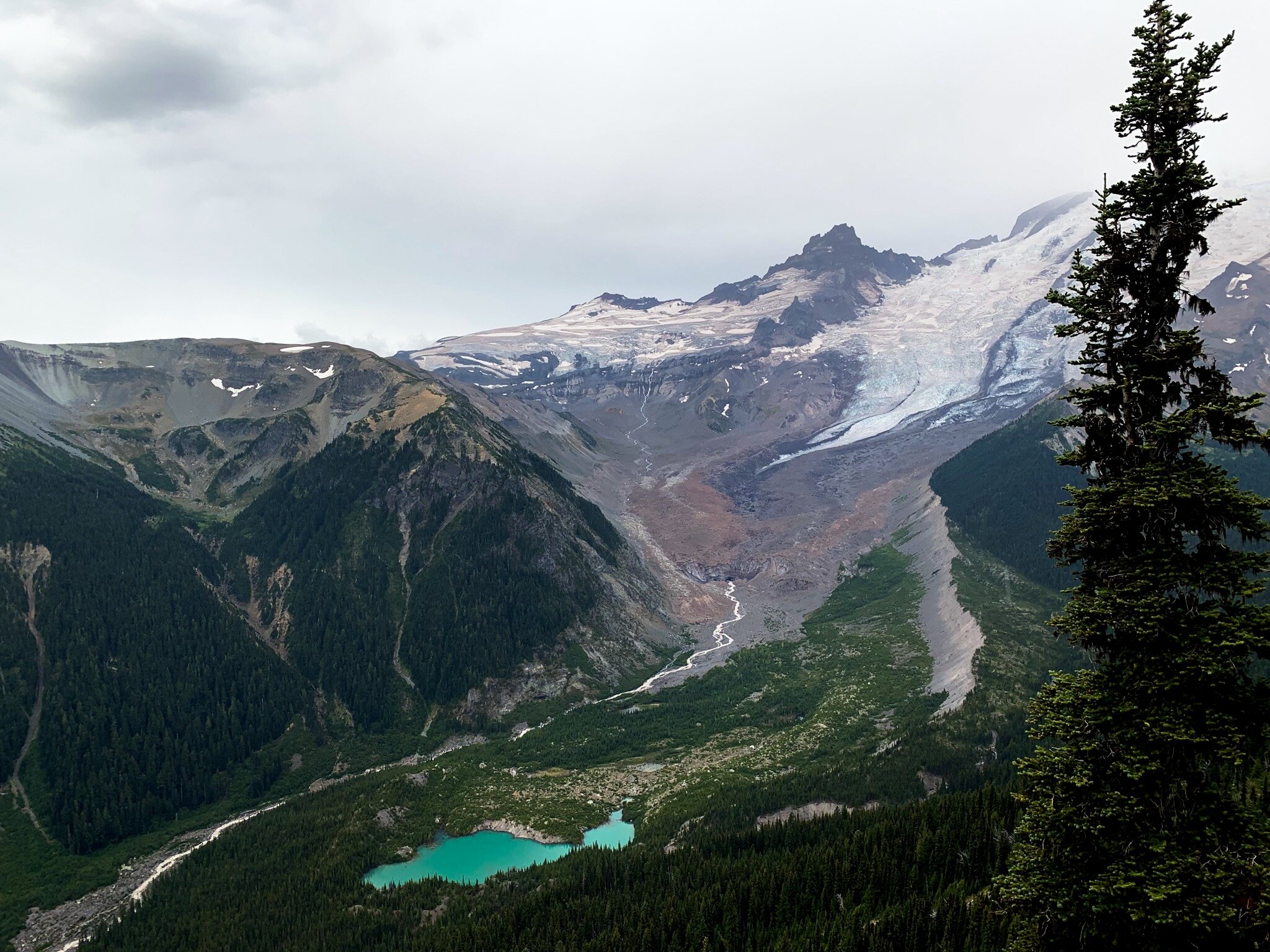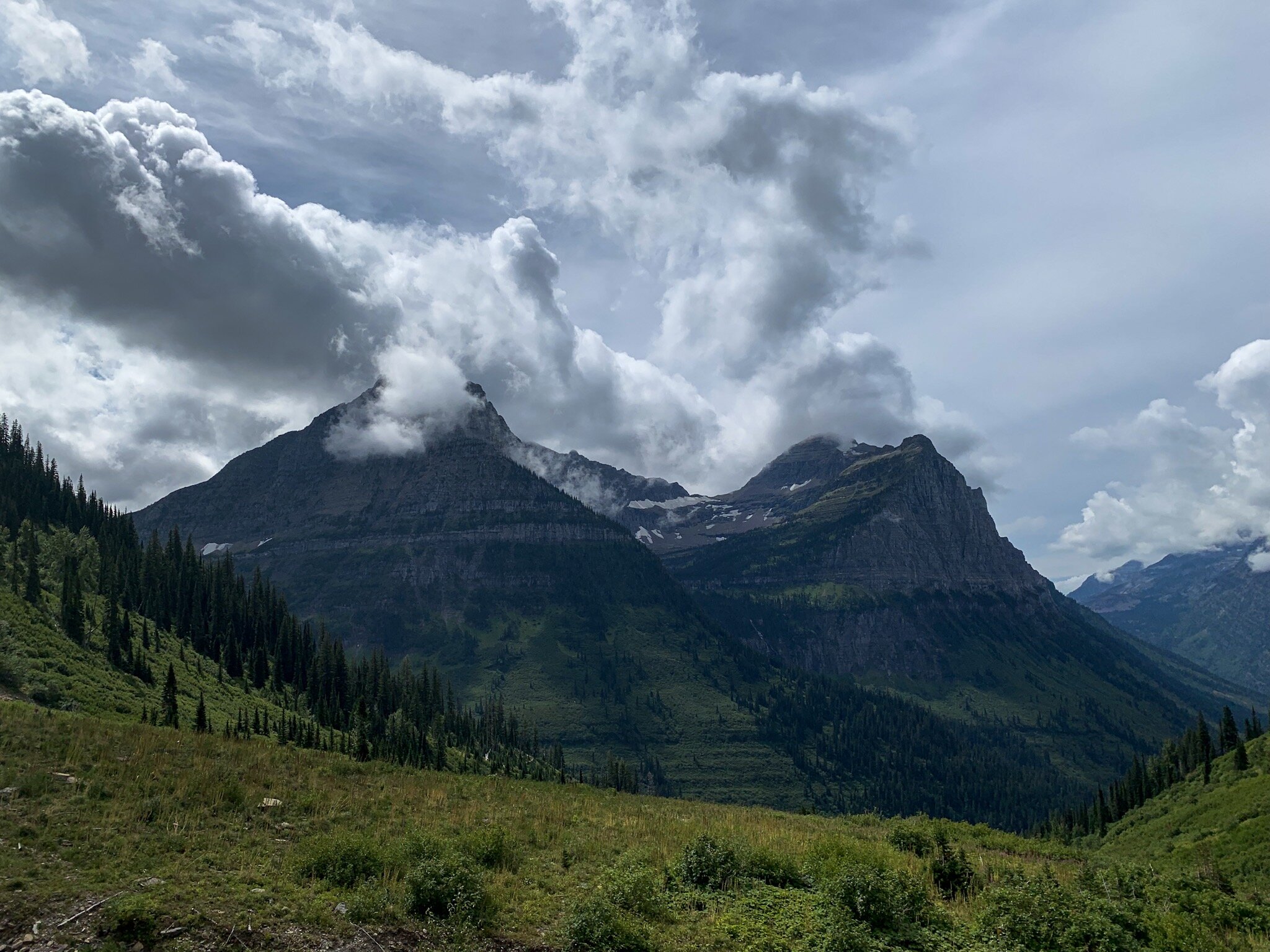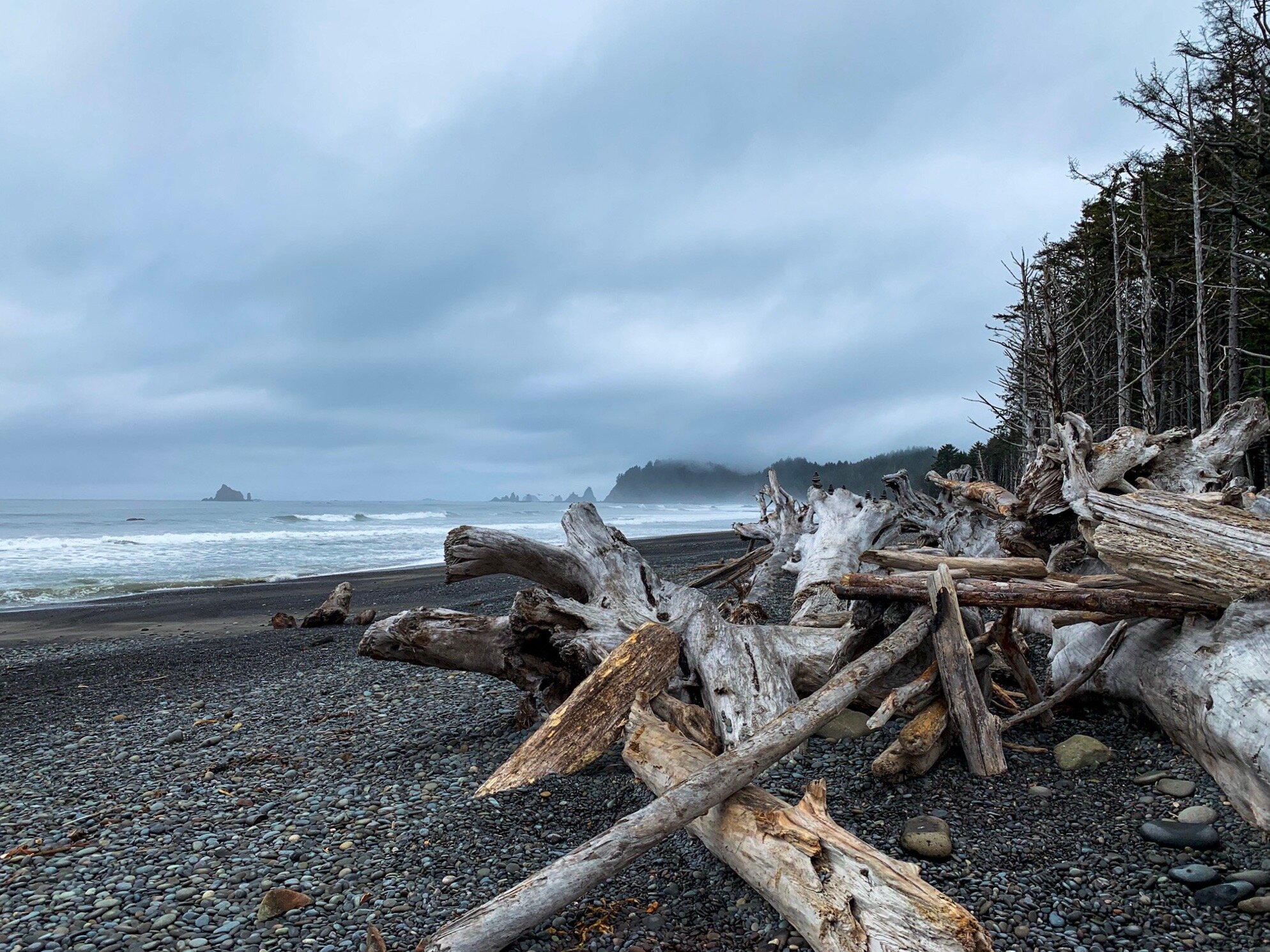Home to three National Parks, Washington State is a nature-lover’s dream destination. From the sprawling mountains of the North Cascades to the hidden rainforest of Olympic, there’s something for everyone in this Pacific Northwest state. But there’s one National Park that stands out as a crowd favorite when it comes to Washington, and that’s Mount Rainier.
Mount Rainier is the most glaciated mountain in the lower 48. This park stays cold well into the summer months, and attracts visitors of all ages to come and explore its forests, climb to its peak, and discover its secret lakes and waterfalls created by snowmelt. In the summer, you can spot beautiful wildflowers and incredible wildlife as you explore the park, and still experience the same snowy landscapes as winter visitors in some areas of the park.
We recently spent the holiday weekend in Mount Rainier and explored the best areas of the park. Here is my guide to help you plan your visit.
The view from an overlook accessible from a trail near the Sunrise Visitor Center.
First things first…
Mount Rainier is located about 2 hours south of Seattle, WA, and is bordered by the Mt. Baker-Snoqualmie and Gifford-Pinchot National Forests. These areas are home to animals such as black bears, marmots, elk, and deer, so be on the lookout for any creatures as you drive through the park!
The entry fee for Mount Rainier is $30 per vehicle or the America the Beautiful Pass. During COVID-19, Mount Rainier is doing fee collection.
Pets are allowed to join you during your visit, but they are limited to certain areas of the park, such as parking lots, campgrounds, and picnic areas. There is a dirt road in the Sunrise section of the park where you can walk your dog. Dogs are not permitted on park trails.
There are two campgrounds in the park, White River and Ohanapecosh, but there are also tons of boondocking and dispersed camping spots in the nearby forests.
Mount Rainier National Park
Sections of the park
There are five main sections of the park: Ohanapecosh, Longmire, Paradise, Sunrise, and Carbon River. Each section has something unique to see and do.
In Ohanapecosh, experience old growth forests, deep canyons, and gorgeous views! We didn’t spend too much time in this section because the road was closed ten miles in due to winter damage.
The Longmire area leads into Paradise, which is the subalpine area in the southern end of the park. Longmire is where the park’s founders stayed during their time in the area, so this is an important area to stop and experience on your way up to the subalpine!
On the way from Longmire to Paradise there are plenty of amazing views to see!
In Paradise, you’ll find yourself up next to the mountain. Here, you’ll be able to experience the subalpine in the southern side of the park, much of which stays snowy well into summer. Here, we were able to do the Nisqually Vista Trail, a small snow hike that leads to a glacial view of Nisqually Glacier.
The Carbon River section is located in the Northwest corner of the park, and is known for being the park’s temperate rainforest. This area is generally cool and rainy, and is a great place to experience some of the most unique Pacific Northwest landscapes.
Mount Rainier is perfect for solo travelers looking to get out of their comfort zones!
Sunrise is our personal favorite section of the park. Here, you’ll reach elevations of 6,400 feet and might meet animals like black bears and marmots. Here, there are plenty of hiking trails that are accessible in early summer, despite the snow, just make sure that you know your hiking level! This is one of the best places to see Emmons Glacier.
Sunrise at Sunrise Point is an incredible experience
Best underrated things to do
While Mount Rainier is known for hiking and mountaineering, there are plenty of really underrated things to experience! These are our favorite things we did during our time in the park.
Get up for sunrise… at Sunrise
Sunrise in the PNW is incredibly early, but you’ll never experience a sunrise like the ones from Sunrise Point in the park. Here, you’ll be above the clouds and get incredible and almost private views of Mount Rainier as soon as the sun comes up. In early July, we got up at 4:30 to drive from the park entrance to Sunrise Point for sunrise at 5am.
A secret no-name lake in Mount Rainier National Park with the famous mountain hiding behind some clouds
Search for hidden waterfalls and lakes
While it is still a hike, it’s not a long one to find the best secret lake and waterfall. The Glacier Basin Trail that starts in White River Campground is home to tons of small yet beautiful waterfalls, and if you’re brave enough, a secret glacial lake with no official name that might take a little bit of effort to find!
Drive up to Tipsoo Lake
This part of the park is free to visit and has an beautiful reflective lake perfect for catching views of Mount Rainier, experiencing some July snow, and having a picnic in the picnic area. The drive up here also has views that can’t be beat!
The view of Mount Rainier from Tipsoo Lake in July
Mount Rainier is truly an incredible National Park to visit, and easily the best in the state of Washington. Home to one of the tallest mountains in the country, this is a site that can’t be missed during your time in the Pacific Northwest. From wildflower to wild animals, to awakening your own wild self, Mount Rainier is sure to give you experiences you won’t soon forget.






































